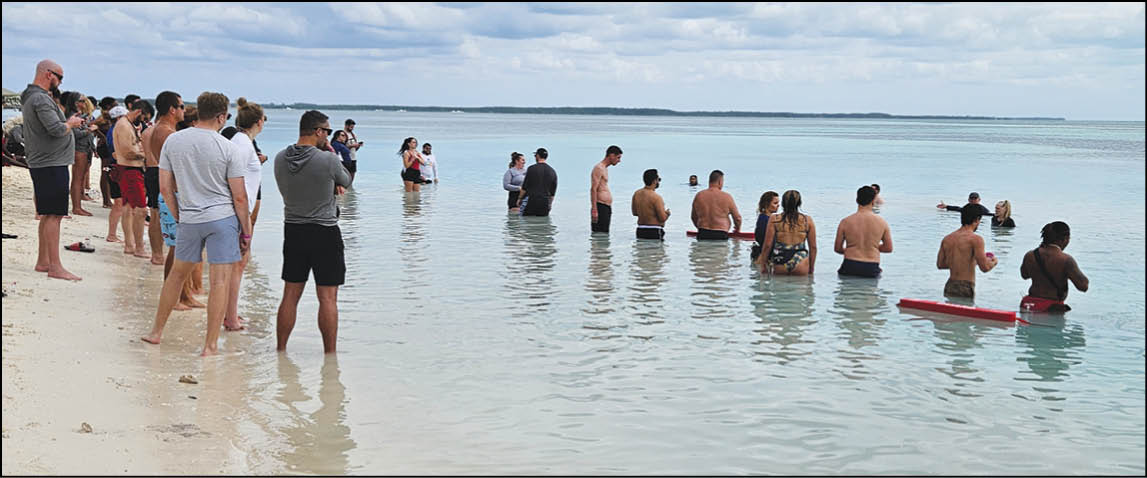When a death occurs in the water, is it necessarily a drowning?
AT: Tim Baldwin
tbaldwin@amusementtoday.com
In August of 2024, a 28-year-old, fit swimmer in a CrossFit competition in Fort Worth lost his life. While it is more common to see children drown than adults, instances of strong swimmers succumbing to drowning incidents aren’t necessarily rare.
In 2008, open-water marathons were introduced to the Summer Olympic Games. With this publicity, athletes participating in open-water competitions have been on the rise. Athlete Francis Crippen died during a World Championship race in 2010. He was a six-time U.S. National Champion.
Why elite athletes are meeting tragic fates isn’t necessarily clear. Theories exist, one of which is immersion pulmonary edema. This condition refers to instances where evidence of fluid in an athlete’s lungs exists after intense exertion. But swimmers could also have had a cardiac event, stroke or seizure. The fact is when these cases happen in water, the cause of death is almost always classified as “drowning.”
Dr. Justin Sempsrott, the founder of Lifeguards Without Borders and medical director for StarGuard Elite, noted that open-water events such as CrossFit competitions and triathlons cause intense stress on athletes’ hearts at the beginning of a competition.
“A mass start can really drive the heart rate and physiologic stress much higher than during training,” Sempsrott said.
Research indicates that about two-thirds of triathletes who experienced cardiac arrest in competition occurred during the swimming portion.
“You add in the true proper adrenaline dump to maximum exertion and that could be enough to tip their coronaries over,” said Sempsrott. “They have the big one that day.”
People with a predisposition to this can be triggered by swimming, adrenaline and emotional stress.
“They may never know they have genetic triggers for drowning, and then it occurs,” said Sempsrott. “They may have a completely clean autopsy, and we can’t figure out why they drowned. That’s the most likely reason a strong swimmer can have a [cardiac event] caused by exertion.”
Not every health occurrence happens in open water either.
If a first-time seizure occurred in the water, it would be unlikely to show in an autopsy if it led to drowning.
When a health event happens with lifeguards present, quite often the assumption was that the lifeguards “weren’t doing their job” and the swimmer drowned.
Wave pools can have similar situations as open-water competitions.
“In an environment like a wave pool where it is dynamic and changing, it’s very often a site where people overestimate their abilities,” Sempsrott told Amusement Today. “Open water is similar in that way. Even if it’s calm, there can be fear and anxiety from being out of that controlled, measured pool. In a wave pool, when the water starts suddenly moving, the cycle of panic and inability to sufficiently swim and then needing rescue can happen very quickly, even with people who believe themselves to be competent swimmers.”
He noted that a slide or other attraction has a lifeguard observing a single rider, whereas a wave pool can’t give one-on-one attention.
“Young, healthy, fit people sometimes drown. Period. Full stop. We need to maintain vigilance when they seem to be a competent swimmer. Even at events or races where it seems to be healthy athletes, we need to be vigilant,” he emphasized.
“Sudden cardiac irregularities can happen both with people in their 20s, 30s and 40s as well as those older in the 60s and 70s population,” Sempsrott said. “If someone collapses coming out of a locker room, then we know it is a medical event and not simply a case where they got a cramp and couldn’t continue swimming. When it happens in the water, that can make it more difficult.”
The challenge is distinguishing the situation when it is fluid. Sempsrott points out that if the situation were a well-known swimmer who while doing a routine training session went under, then a lifeguard would know it was a medical event, but in the busy activity of a wave pool, a lifeguard isn’t as apt to recognize that when a swimmer is unknown and is seen at the bottom.
In a standard drowning situation, the “ABCs” are prioritized — airway, breathing and circulation, with the incorporation of an AED. For a medical event, the AED is the most important intervention.
“With the absence of knowing which pathway to take, it is important to train in such a way that you have a uniform response to where an AED is included in the response,” noted Sempsrott.
In the case of a child being submerged, the clearer path is to treat it as a drowning.
“It’s difficult. Even among medical experts, there is confusion around the definition of drowning,” explained Sempsrott. “The medical definition is respiratory impairment following submersion. If someone drowns because of a seizure in water, how do we treat this medically and how do we prevent it from happening again? We often use the word drowning to mean different things. The lifeguard may not know it was a medical event that precipitated the drowning. From a public relations standpoint, the next layer is that an operator cannot disclose the private health information of the person. Personal health information is protected.”
The term medical emergency covers a lot of bases. An operator can legally say that to a media outlet because even a drowning is classified as a medical emergency. In alignment with that, a facility can add that lifeguards responded correctly in accordance with their training.
In assessing the situation, Sempsrott stresses that context clues are everything: “Be vigilant. If a lifeguard recognizes a competent swimmer suddenly goes under, [there is reason to believe] that it is a medical event. It’s very difficult. That’s why it’s important to have a universal response protocol.”













